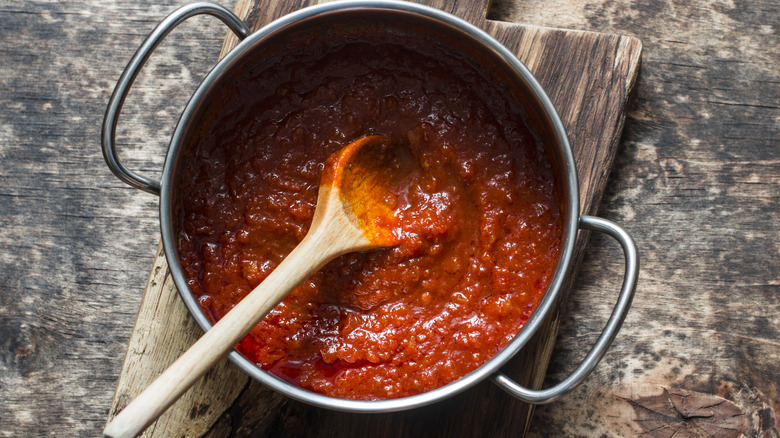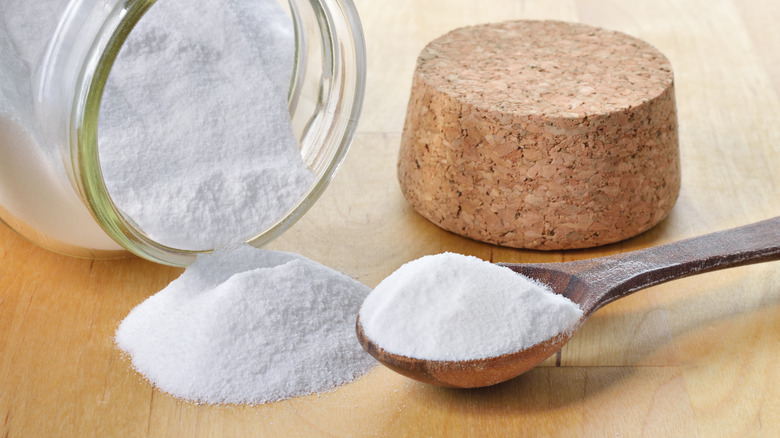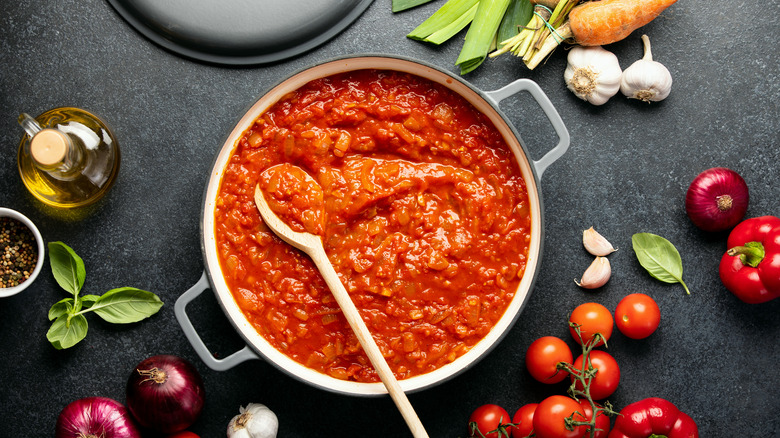A Touch Of Baking Soda Transforms Tomato Sauce Without Sugars
Adding a pinch of sugar to tomato sauce is an age-old trick to enhance the natural sugars in tomato sauce. Those sugars are meant to offset the natural acidity of tomatoes. Finding the balance between those two is believed to be the secret to great tomato sauce.
Thinking of tomato sauce as just those two flavors, however, is an oversimplification. Tomatoes have hundreds of volatiles that can contribute to the flavor and create a complex array of flavors, including a high concentration of umami. Those various compounds add up to so much more than sweet, and sour.
So, dialing in the flavor of tomato sauce deserves more consideration than adding a spoonful of sugar. The simple ways to upgrade basic tomato sauce include tracking down the best tomatoes. More often than not, those are canned tomatoes. Many cooks swear by Italian canned tomatoes from San Marzano. Their low acidity makes them especially sweet and they blend into thick, luscious sauces.
San Marzano tomatoes are pricey, and might just be "San Marzano-style" Roma tomatoes. But, if the key to these preferred tomatoes is low acidity, is there a way to hack lower acidity for any can of tomatoes?
Baking soda plus acidic tomatoes equals sweeter tomato sauce
One of the differences between Roma and San Marzano canned tomatoes is acidity levels. Lowering the acidity of any old canned tomato is as simple as adding a pinch of baking soda to the sauce. Baking soda is an alkaline – and the opposite of an acid. Combining those two causes a release of carbon dioxide bubbles that we use to give our quickbreads, cookies, and cakes some rise. The end result of that leavening reaction neutralizes some of the acid. So, adding baking soda will lower the acidity, and that lets the tomatoes' natural sugars shine through.
Use a light hand, as a little baking soda goes a long way. For a batch of tomato sauce, start slowly with a mere 1/8 teaspoon. Give it a stir, taste, and see if you need more. You will notice the tartness start to fade, giving way to a sweetness.
Some cooks use a much larger amount of baking soda, up to 1/4-teaspoon per cup of sauce. That could be fine for people who need to avoid eating an acidic diet, but it will alter the taste of the tomato sauce. Sometimes, this drastic amount of soda is used as an attempt to fix bitter flavors. There's a better way to do that.
Other tomato sauce transformations and upgrades
Bitter sauce is probably caused by adding too many herbs or adding them too early. Fresh herbs should be added right at the end of cooking, otherwise, the long cooking will dissipate the volatile flavors you want, and the ones that remain tend to be bitter. Dried herbs are a safer bet, but these can also turn bitter if you use a heavy hand.
This simple tomato sauce recipe hides some smart secret ingredients that each have big impacts on the sauce's flavor and texture. The carrots add a subtle sweetness that's more complex than plain sugar. Adding red or white wine brings more complexity, and even a tiny amount of alcohol coaxes more flavor out of tomatoes. The bouillon cubes might seem strange, but they're an ingredient nearly every restaurant swears by to add extra flavor-boosting umami. A splash of Worcestershire, or fish sauce can do the same thing. Giving the sauce time to reduce will allow the flavors to concentrate and thicken the sauce.
Finally, a large amount of olive oil brings the necessary richness to round out the sauce's flavor. If fat pools on top of the sauce, introducing some starch-laden pasta cooking water will allow the fat to emulsify into the sauce. Another emulsification trick is to stir a tablespoon of cold butter into the sauce right before serving.


